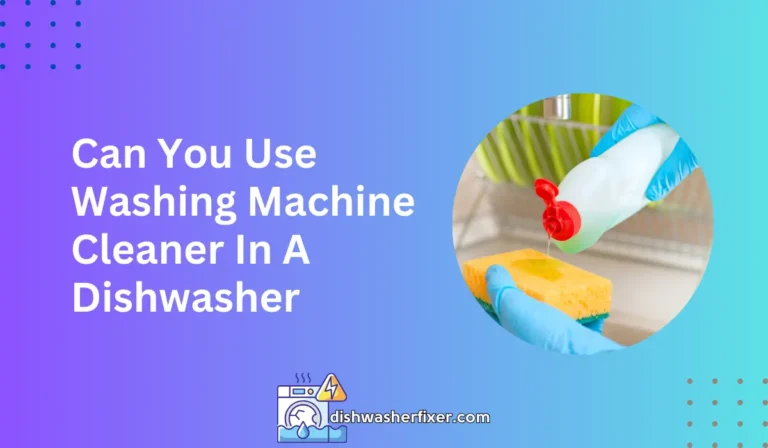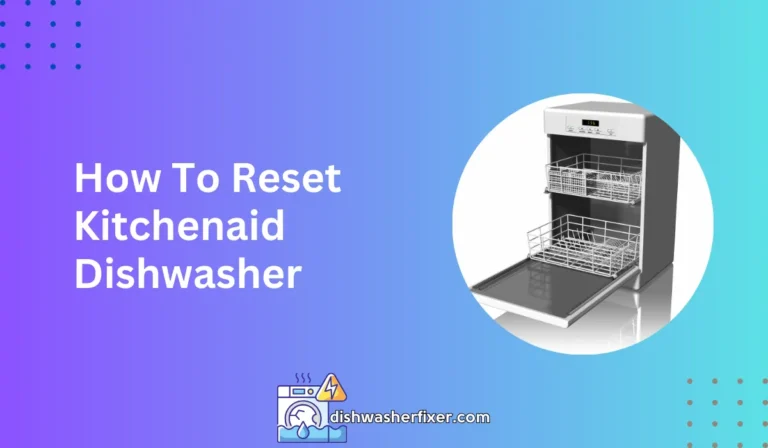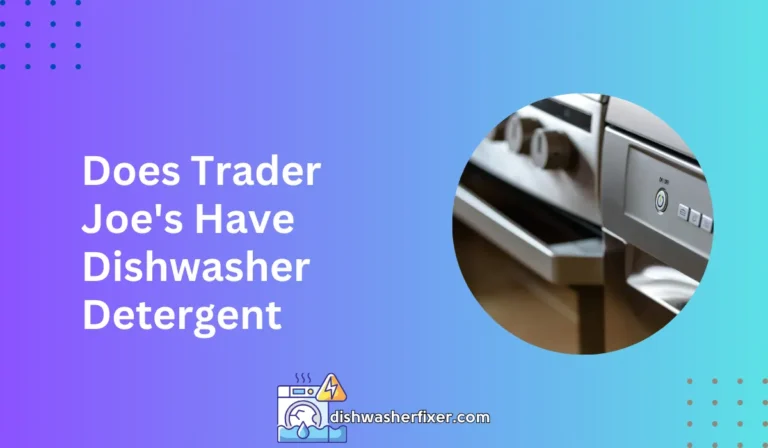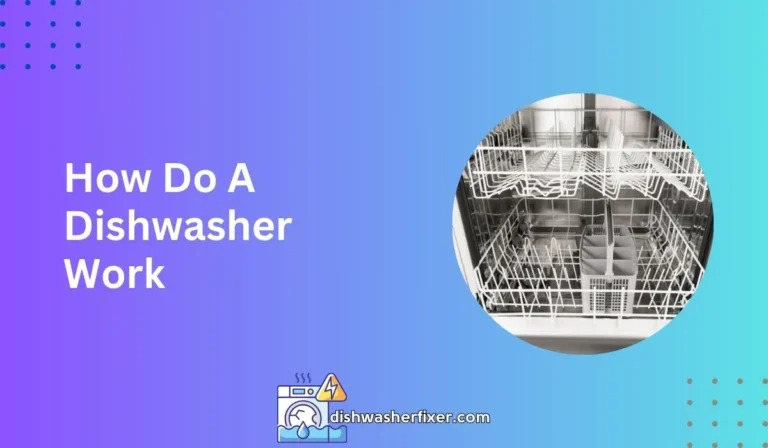How to Repair a KitchenAid Dishwasher: Quick Fix Guide
To repair a KitchenAid dishwasher, first diagnose the issue, such as water not draining or dishes not cleaning properly. Check the manual for troubleshooting tips. For common problems, clear clogs from the drain, ensure the filter is clean, and inspect the spray arms for blockages. Always disconnect power before attempting repairs.
Identifying the Problem

Recognizing Dishwasher Malfunctions
When your KitchenAid dishwasher starts acting up, it’s important to quickly identify the symptoms.
Common signs include the machine not starting, water not draining, or dishes coming out dirty after a cycle. Listen closely for unusual noises, and look for leaks or error messages displayed on the control panel.
Gathering Your Tools and Materials
Before diving into your dishwasher repair, gather the necessary tools. You’ll need screwdrivers, pliers, a multimeter, and perhaps a torque wrench. Keep towels and a bucket handy for water spills, and have your user manual within reach for reference.
Adhering to Safety Precautions
Safety is paramount. Always unplug the dishwasher or shut off the circuit breaker before attempting any repairs. Wear gloves to protect your hands from sharp objects within the machine, and ensure you work in a well-lit area.
Troubleshooting Common Issues
Start with simple troubleshooting steps. Check whether the dishwasher is receiving power and ensure the door is properly latched.
If the dishwasher isn’t draining, inspect the drain hose for kinks or clogs. For cleaning issues, examine the spray arms for blockages.
Utilizing the User Manual and Error Codes
Your KitchenAid dishwasher’s user manual is an invaluable resource. It includes a list of error codes that can help pinpoint specific issues. If you’ve misplaced the manual, you can often find a digital copy online by searching for your model number.
Executing the Repair
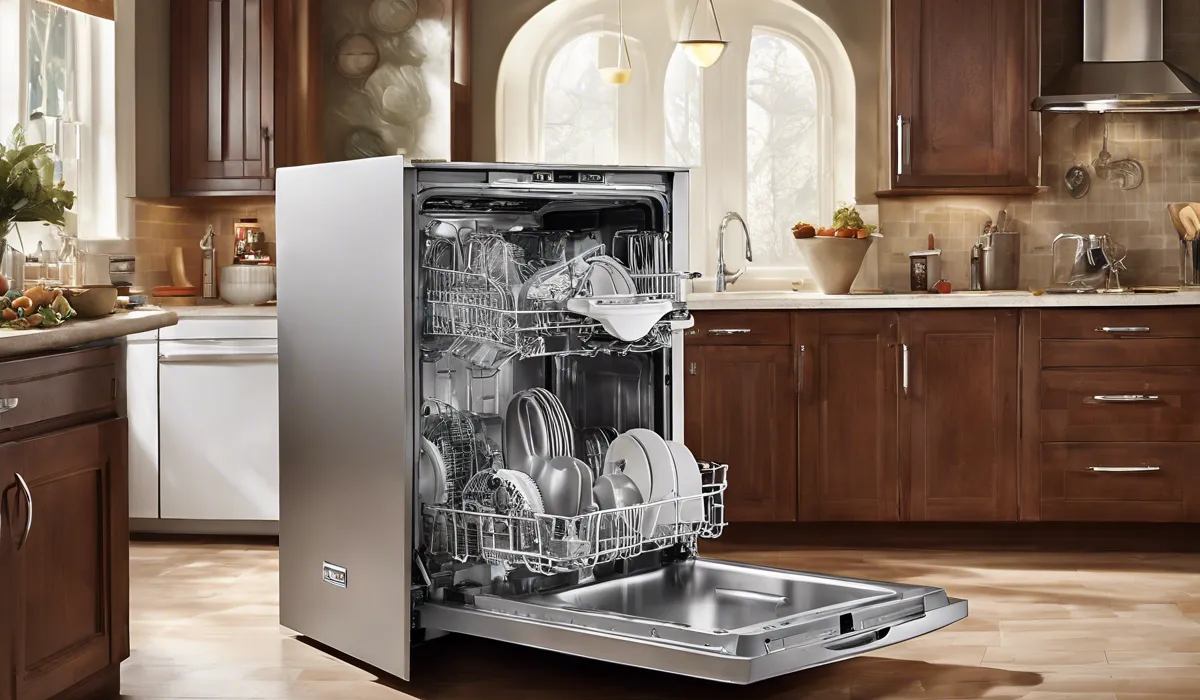
Addressing Clogs in the Drain and Filter
To unclog the drain and filter, remove any debris found in the sump area or caught in the filter.
Clean the filter under running water, and use a straightened coat hanger to clear out the drain hose if necessary. Remember to place a bucket underneath to catch any residual water.
Replacing the Water Inlet Valve
If the dishwasher isn’t filling with water, the water inlet valve may be at fault. Locate the valve, typically found behind the kickplate, and use your multimeter to test for continuity.
If it’s defective, remove the valve and replace it with a new one, ensuring a snug fit of all connections.
Repairing the Dishwasher Pump
A malfunctioning pump can cause draining or noise issues. Access the pump from under the dishwasher, check for obstructions, and test the motor’s continuity.
If the pump is beyond repair, install a replacement, aligning it correctly with the mounting brackets.
Fixing Heating Elements and Thermostats
If your dishwasher isn’t heating water, the heating element or thermostat may be the culprits.
With the dishwasher disconnected from power, remove the bottom rack and unfasten the heating element to test it. Replace the element or thermostat if tests indicate they’re not functioning properly.
Control Panel Troubleshooting
Control panel issues may require resetting the dishwasher or checking for loose connections. If certain buttons don’t respond, the control panel may need to be replaced.
Carefully disconnect the old panel and connect the new one, ensuring all cables are securely attached.
Handling Electrical Components with Care
When dealing with electrical components, use a multimeter to test for continuity and ensure you don’t handle any wiring with the power on. Be cautious and precise to avoid damaging sensitive electrical parts.
Deciding Between Replacement and Maintenance
Some parts, like filters and spray arms, can often be cleaned rather than replaced. However, if a component is visibly damaged or fails continuity tests, it’s time for a replacement. Always assess the state of each part before making a decision.
Maintenance Tips to Prevent Future Issues
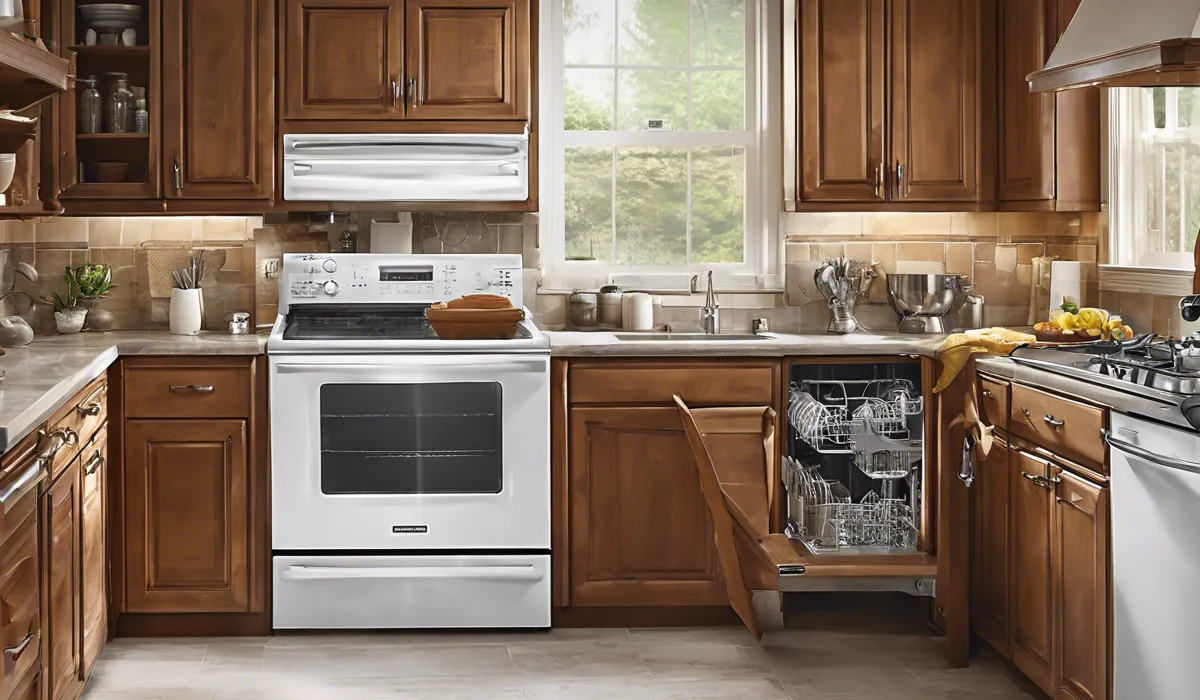
Establishing a Cleaning and Maintenance Routine
Regular maintenance is key to preventing issues with your KitchenAid dishwasher. Monthly cleaning of the filter and wipe-downs of the gaskets and spray arms can keep it running smoothly.
Also, periodically run a dishwasher cleaner through a cycle to remove any buildup.
Adopting Best Practices for Longevity
Prolong your dishwasher’s life by using it as intended. Avoid overloading, and use the recommended type and amount of detergent. Choose the correct wash cycle for your load to reduce wear and tear on the machine.
Choosing the Right Detergents and Rinse Aids
Using the correct cleaning agents can make a significant difference. Opt for detergents and rinse aids designed for use in dishwashers, as they help prevent mineral deposits and ensure dishes come out spotless.
Loading the Dishwasher Correctly
Load your dishwasher properly to avoid repairs. Place dishes so that water can reach all surfaces, and avoid placing items that can block the spray arms. Check that utensils won’t slip through the basket and potentially jam the spray arm or pump.
Knowing When to Call a Professional
While many dishwasher issues can be resolved with DIY repairs, sometimes it’s best to seek professional help.
If you’re not comfortable handling electrical components or if the problem persists after your attempts to fix it, call a certified technician to ensure your dishwasher is repaired safely and effectively.
FAQs About Repairing a KitchenAid Dishwasher
How do I troubleshoot a KitchenAid dishwasher not draining properly?
First, check for clogs in the drain hose and ensure the filter is clean. Consult the dishwasher’s manual for specific troubleshooting steps and remember to disconnect the power before inspecting any components.
What should I do if my KitchenAid dishwasher is not cleaning dishes well?
Inspect and clean the spray arms for any blockages and verify that the filter is clear of debris. Also, check if the dishwasher is being loaded correctly according to the manual’s guidelines.
Where can I find the troubleshooting section in the KitchenAid dishwasher manual?
The troubleshooting section is typically located towards the back of the KitchenAid dishwasher manual. It can also be found online on the manufacturer’s website under support resources for your specific model.
Is it safe to perform repairs on my KitchenAid dishwasher at home?
Yes, it is safe to perform some repairs at home if you follow the manual’s instructions and safety guidelines, such as disconnecting the power before starting any repairs. However, for complex issues, consider contacting a professional technician.
What maintenance can I perform to prevent future issues with my KitchenAid dishwasher?
Regular maintenance includes cleaning the filter, checking and cleaning the spray arms, and ensuring that the dishwasher is loaded properly. Also, periodically run a dishwasher cleaner through a cycle to keep the interior clean.
Final Thoughts
Repairing a KitchenAid dishwasher involves initial diagnosis of issues like drainage problems or inadequate cleaning.
Reference the manual for guidance and tackle common fixes by unclogging the drain, cleaning the filter, and checking spray arms for obstructions. Always prioritize safety by disconnecting power before starting any repair work.
Useful Resources
- https://www.cpsc.gov/Recalls/2018/Whirlpool-Recalls-KitchenAid-Electric-Kettles-Due-to-Burn-Hazard
- https://storymaps.library.villanova.edu/GEV4320-Spring2020/map.php?path=http://%D0%BE%D0%B1%D1%8A%D0%B5%D0%B4%D0%B8%D0%BD%D0%B5%D0%BD%D0%B8%D0%B5-%D0%B8%D0%BD%D0%B6%D0%B5%D0%BD%D0%B5%D1%80%D0%BE%D0%B2.%D1%80%D1%84/73695411fe43z.html
- https://www.cpsc.gov/Recalls/2015/bsh-home-appliances-recalls-dishwashers

